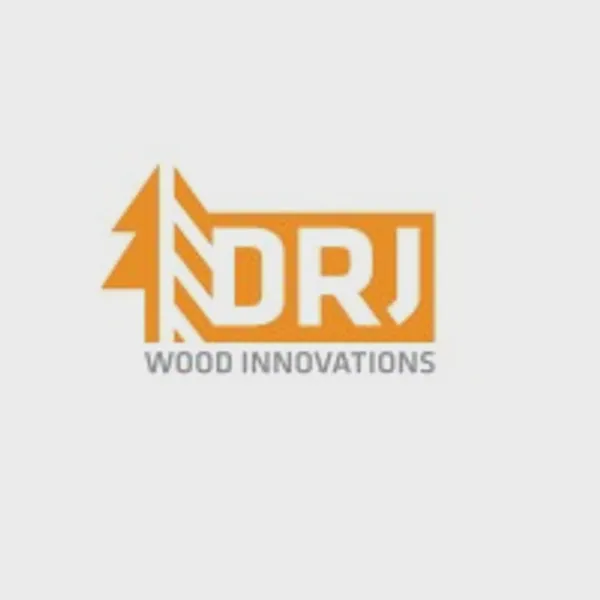DR Johnson Wood Innovations: products and EPD reality
Oregon’s DR Johnson Wood Innovations helped kickstart U.S. mass timber. Today’s spec questions are pragmatic: what do they sell now, how broad is the lineup, and how well are those products covered by Environmental Product Declarations? Here’s the quick read manufacturers and bid teams actually need.


Who they are and what they make
DR Johnson Wood Innovations is best known for two mass‑timber staples: custom glued‑laminated timber beams and, historically, cross‑laminated timber panels. They’re long‑time glulam producers and early U.S. CLT pioneers listed among certified CLT manufacturers by APA, the Engineered Wood Association (APA, 2025). For product details, their glulam page is a helpful starting point: https://www.drjwoodinnovations.com/glulam/.
Product range at a glance
Expect two primary categories rather than a sprawling catalog: glulam beams and CLT panels. Within glulam alone, profiles, grades, and curves create dozens of practical SKUs, with project‑specific make‑to‑order variants common. CLT options historically covered 3, 5, and 7 ply in multiple thicknesses and sizes, again tailored per job rather than stocked like commodity studs.
EPD coverage today
We could not locate active, product‑specific EPDs for DR Johnson’s glulam or CLT that are publicly posted by major program operators as of November 21, 2025. Wood product EPDs do exist widely at the industry level, including glulam and other structural wood types, and they’re current for 2025 (WoodWorks, 2025). If you are selling into projects that incentivize or require EPDs, this gap can create friction at submittals.
Why the gap matters commercially
Many owners and AEC teams prioritize products with third‑party verified EPDs to earn material credits and to keep embodied‑carbon accounting tight. LEED keeps rewarding teams that specify multiple products with verified EPDs, which means manufacturers without them often start one step behind in spec reviews (USGBC, 2025). In practice, a competitor with a recent EPD can feel like they brought their passport to the checkpoint while everyone else waits in the longer line.
The CLT wrinkle you should know
Industry reporting indicates DR Johnson sold its CLT plant equipment in 2023, a signal that CLT production may be paused or restructured (Building Products Digest, 2023). If your sales team still markets DR Johnson CLT, confirm current availability and cut‑to‑fit services before you commit schedule or price in a bid package.
Who they face most often on specs
Region and application decide the rivalry, but the usual mass‑timber cast shows up: SmartLam (CLT and glulam), Nordic Structures (CLT and glulam), Vaagen Timbers (CLT and glulam), Kalesnikoff (CLT and glulam), Freres Engineered Wood for mass plywood alternatives, plus Boise Cascade and other glulam stalwarts for beams. Several of these competitors have product‑specific EPDs visible in state Buy Clean portals, which makes life easier for specifiers reviewing submittals and embodied‑carbon targets (Colorado DOR, 2025).
A quick competitor snapshot you can use in conversations
Colorado’s Buy Clean list shows recent, product‑specific EPDs and validity windows for mass‑timber products such as Kalesnikoff glulam, Nordic X‑Lam CLT, SmartLam CLT, and Vaagen CLT. Teams tracking EPD expirations and GWPs use these listings to pre‑qualify alternates during design development and VE rounds (Colorado DOR, 2025). If your product lacks an EPD, you are asking the specifier to do extra work or to take on penalties in modeling, which raises replacement risk.
What to do next if you are on DR Johnson’s team
If glulam is your current best‑seller, prioritize a product‑specific EPD for one or two high‑volume SKUs first, then expand to adjacent sizes. Where CLT demand exists, clarify availability internally and plan the right PCR path before you promise an EPD date. The American Wood Council’s catalog of current wood EPDs is a reliable map for program norms and PCR references (AWC, 2025). Keep data collection simple for the plant, pick a recent reference year, and don’t over‑optimize the first issue. A credible EPD in hand beats a perfect one that never ships.
Bottom line for specability
DR Johnson brings recognized glulam capability and a pioneering CLT story, but today’s public EPD footprint appears thin. In markets where EPDs are requested on almost every job, that translates into slower submittals and higher swap‑out risk. Closing the EPD gap on one flagship glulam line would pay back quickly in bids where material credits and carbon guardrails are table‑stakes. It’s definately the kind of paperwork that wins work.
Sources for numbers in this article: WoodWorks list of current wood EPDs, updated 2025 (WoodWorks, 2025); APA roster and guidance on CLT manufacturers (APA, 2025); Colorado Department of Revenue Buy Clean listings for mass timber EPDs (Colorado DOR, 2025); USGBC credit library guidance for EPD use in LEED (USGBC, 2025); American Wood Council updates on industry EPDs (AWC, 2025).
Frequently Asked Questions
Does an industry‑wide wood EPD count for LEED credits if we can’t find a DR Johnson product EPD?
Yes, industry EPDs contribute to LEED MR credits, though product‑specific EPDs tend to be weighted more favorably in credit accounting (USGBC, 2025).
If CLT production is paused, should we still pursue a CLT EPD?
Only if near‑term production is planned and data quality will meet verification requirements. Otherwise, start with glulam where volumes are consistent and data is easier to collect and verify.
What PCR should cover glulam and CLT in North America?
Most wood EPDs reference the Structural and Architectural Wood Products PCR under ASTM’s program, alongside EN 15804 for EU‑facing declarations. The WoodWorks and AWC pages link to current PCRs and EPDs (WoodWorks, 2025; AWC, 2025).
